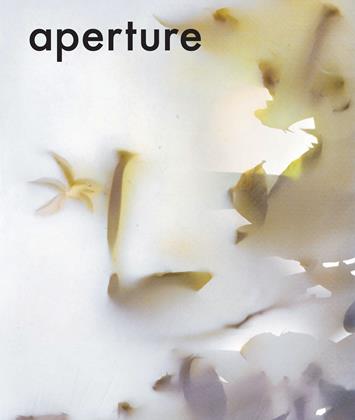PETER FISCHLI AND DAVID WEISS
REVIEWS
What could be better than a very smart artist with a cunning sense of humor? How about two such artists working together in gleeful lifelong complicity? Swiss duo Peter Fischli and David Weiss have been a collaborative team since 1979, and their work is often marked by a penetrative but droll wit, a good-natured Mitteleuropa ironic shrug that finds subtle comedy (often accompanied by its close companion, wistful melancholy) a good way of unmasking life’s absurdities. Their first collaborative piece, The Sausage Photographs (1979) concerns wursts and sandwich meats playing various parts in bourgeois vignettes (scenes of carpet shops, car crashes, fashion shows, mountain climbing, etc.)—the sausages offered as little people and autos and the sliced meats as carpets and clothes. It’s a disarming bit of cleverness: a kind of Magrittean transformative gesture—a parallel universe occupied by encased meats who function pretty much as people do: they are banal, mundane, and preeningly theatrical. Photography documents these ten tabletop genre scenes, whose gentle tongue-in-cheek raillery made for a great début.
Fischli and Weiss’s recent exhibition at the Art Institute, their first museum show in Chicago in more than twenty years, was itself a curatorial collaboration, organized by Matthew Witkovsky (the AlC’s curator of photography) and Lisa Dorin (associate curator of contemporary art). Dorin and Witkovsky were wise not to make the customary decision of trying to survey snippets of the artists’ entire thirty-year body of work; they concentrated instead on three pieces: the Sausage Photographs; seventy-one photographs from A Quiet Afternoon (1984-86); and the fifteen-projector, 1,215-slide installation Questions (1981/2002-3). While other Fischli-Weiss projects (it should be said that their film and video work was missed in this show) have often had a more forlorn air, here wit and whimsy embedded in the everyday are celebrated and wonderfully conveyed. A Quiet Afternoon is a relentless series of vernacular stuff— buckets, plastic bottles, tires, shoes, brushes, bits of wood, saws, plastic tubing, chairs, vases, and so on nearly ad infinitum—photographed in tortuously posed and precariously balanced assemblages, somewhat akin to Robert Rauschenberg Combines. But these are not sculptures; they are dozens and dozens of photographs of life’s effluvia caught just a moment before its inevitable collapse, a propped-up universe of the discarded and exhausted somehow made pertinent and active, given one last assertive gasp of being before arriving at the state of trash. The grimy warehouselike studio setting of these photographs emphasizes the atmosphere of detritus and abandonment, but there is in almost every image an exhilarative sense of gravity somehow defeated, a dancelike arabesque that seems victorious.
More meandering and ambiguous is the project Questions, which includes 1,215 snippets of handwritten texts in English, German, Italian, and Japanese. (To quote a few English ones: “Should I punish the world by leaving it?” “Do I have to envision the universe as foam?” “Does a hidden tunnel lead directly to the kitchen?") These are projected in an endless loop as white letters—as well as a few perfunctory line drawings of a house, car, etc.—on a black field over three walls. The multilingual texts literally curve through space, starting and stopping, fading in and fading out, suggesting little strands of cultural DNA, not organizing itself into any helix, just flowing into conceptual and linguistic drift, a deconstructed Tower of Babel. These clever and surreal aphorisms/queries seemed never ending and appeared in a multitude of combinations, febrile and light-footed, flexible and witty, humorous and thoughtful—all in all just like their creators.©
James Yood
Peter Fischli and David Weiss: Questions, The Sausage Photographs, and A Quiet Afternoon was presented at the Art Institute of Chicago, February 2May 1, 2011.
James Yood teaches modern and contemporary art history at the School of the Art Institute of Chicago and directs its New Arts Journalism program.
 View Full Issue
View Full Issue
More From This Issue
-
 Dialogue
DialogueTalking Pictures
Fall 2011 By John Pilson -
 Essay
Essay"This Is The Photo League"
Fall 2011 By Mary Panzer -
 Work And Process
Work And ProcessAn Atlas Of Decay: Cyprien Gaillard
Fall 2011 By Brian Dillon -
 On Location
On LocationRimaldas Vikšraitis: Grimaces Of The Weary Village
Fall 2011 By Martin Parr -
 Portfolio
PortfolioLois Conner: Campania, 2010
Fall 2011 By Lois Conner -
 The Anxiety Of Images
The Anxiety Of ImagesAbigail Solomon-Godeau
Fall 2011 By Abigail Solomon-Godeau
Subscribers can unlock every article Aperture has ever published Subscribe Now
James Yood
-
 People And Ideas
People And IdeasBetween Two Worlds
Fall 1989 By James Yood -
 Reviews
ReviewsRegarding Seas And Skies
Summer 2004 By James Yood -
 Reviews
ReviewsPersian Visions: Contemporary Photography From Iran
Summer 2007 By James Yood -
 Reviews
ReviewsRobert Heinecken: Sex And Food
Winter 2007 By James Yood -
 Reviews
ReviewsBarbara Crane: Challenging Vision
Spring 2010 By James Yood -
 Reviews
ReviewsStreet Seen
Winter 2010 By James Yood
Reviews
-
 Reviews
ReviewsRaymond Depardon Silence Rompu
Spring 2000 By Diana C. Stoll -
 Reviews
ReviewsAgitated Images: John Heartfield And German Photomontage, 1920-1938
Winter 2006 By George Baker -
 Reviews
ReviewsThe Encounter Of Man And Nature: The Spiritual Crisis Of Modern Man
Summer 1970 By Haven O’More -
 Reviews
ReviewsPhotography And The Self: The Legacy Of F. Holland Day
Summer 2007 By Laurie Dahlberg -
 Reviews
ReviewsPaul Outerbridge And Jo Ann Callis
Winter 2009 By Susan Morgan -
 Reviews
ReviewsEvelyn Hofer Retrospective
Spring 2007 By Vicki Goldberg

